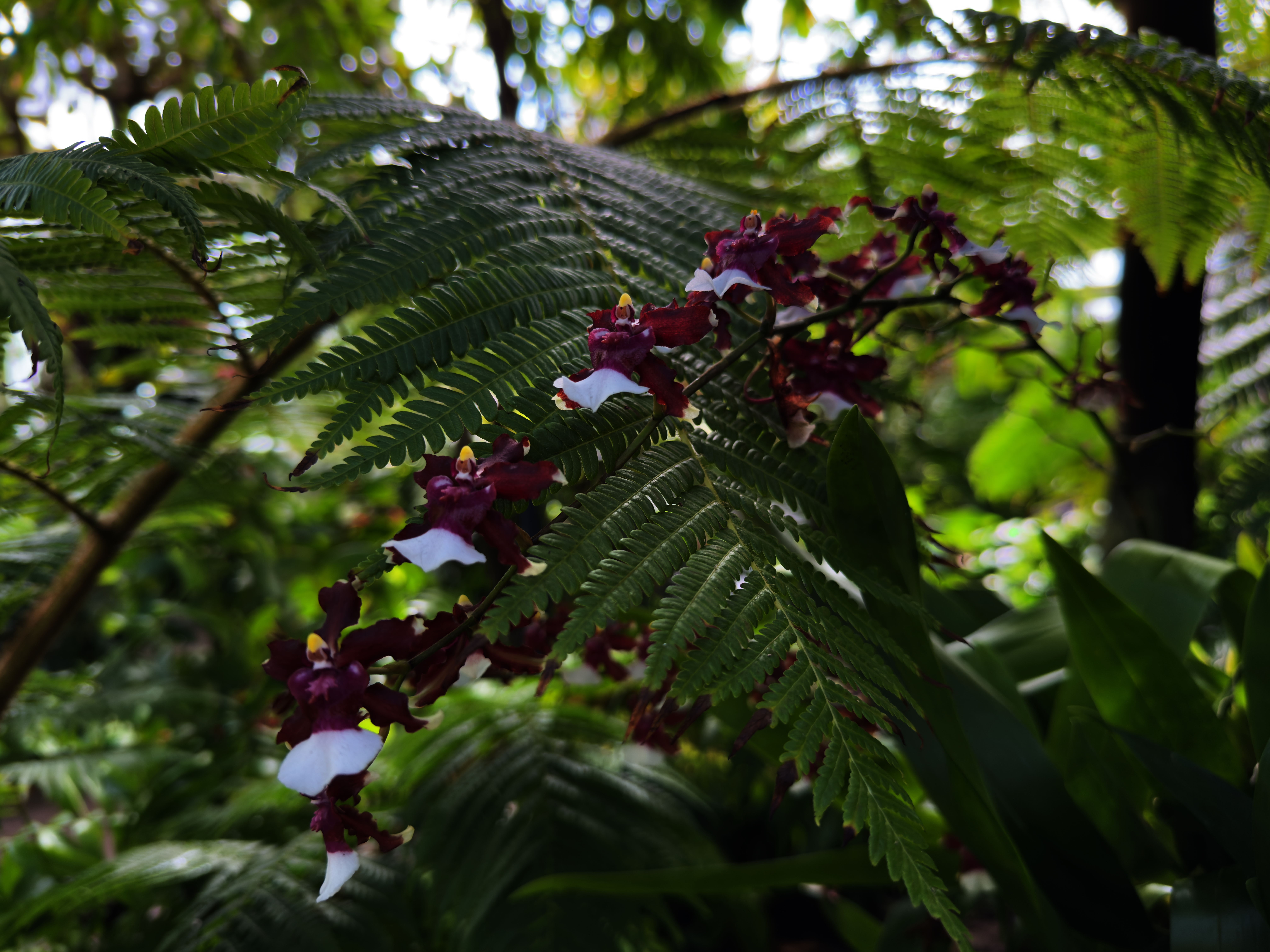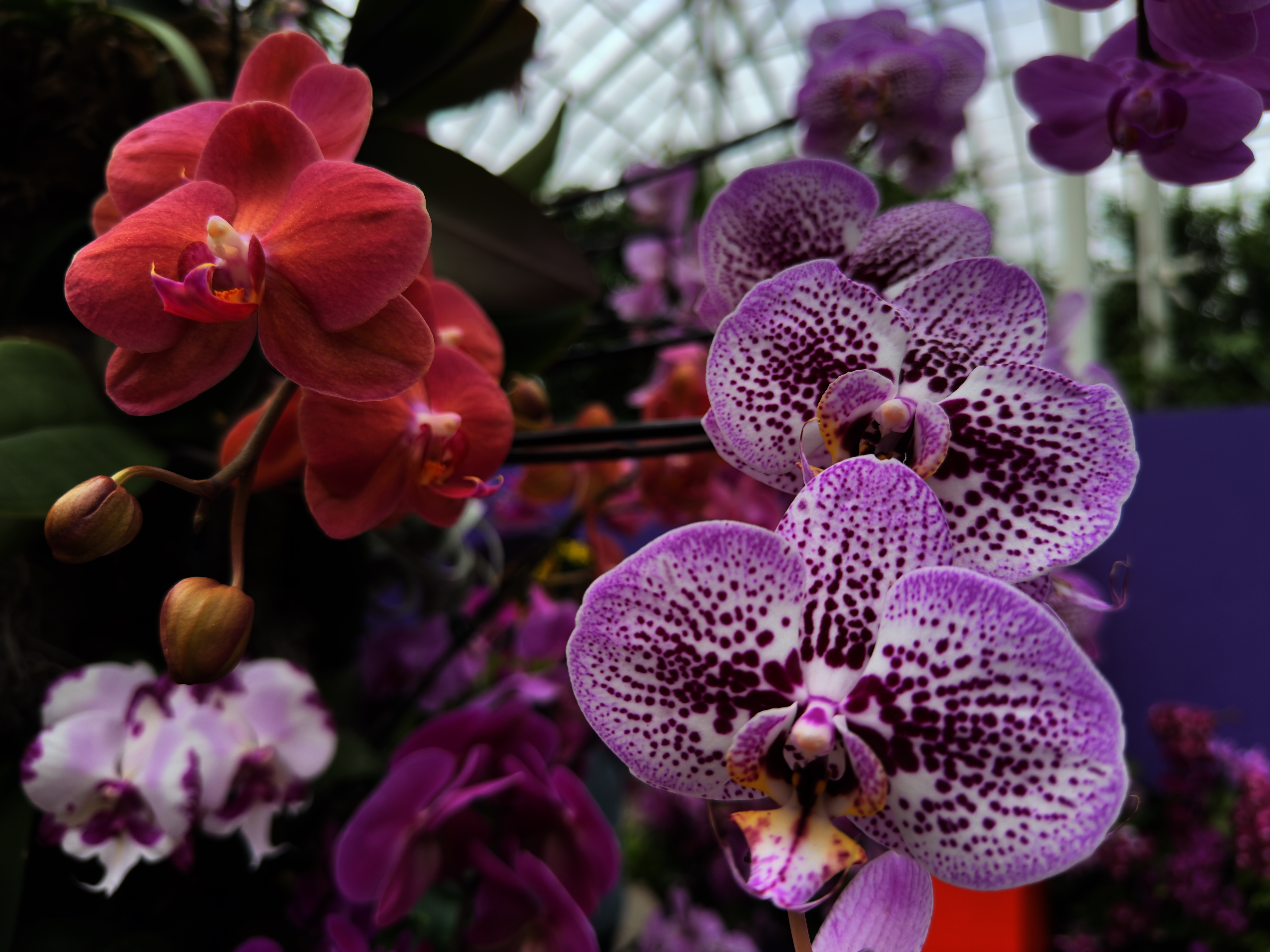I carry the best camera phones with me every day, but sometimes, a special event provides an opportunity to compare. The New York Botanical Garden in New York City is hosting its annual orchid show, so I brought my favorite camera phones and my own dedicated camera to see how these phones perform.
I used the Apple iPhone 16 Pro, Samsung Galaxy S25 Ultra, and OnePlus 13 to take hundreds of photos – more than 300 samples each – of the thousands of blooms to see how they managed to capture these perfect spring memories, and the results shocked me!
Why? Because the OnePlus 13 held its own against both of the top contenders and my Fujifilm X-T5. I was surprised by how buggy the Apple iPhone 16 Pro camera has become and how inconsistent the color accuracy on the Galaxy S25 Ultra can be. While I wouldn’t call the OnePlus 13 my clear winner, you can see the results below, and the competition is tight.
How I judge the best camera phones
To judge these images, I look for color accuracy and lighting foremost. I want to see the natural colors of the flowers. Then I want fine details. Finally, I expect a dreamy, blurred bokeh background that looks natural and isolates my subject without distraction.
What surprised me most on this trip was how much the camera software matters. As expected, Samsung offers the most camera options, though some features require additional software and downloads. I was disappointed that the OnePlus 13 offered very little control – I couldn’t force the camera to shoot at its highest 50MP resolution using the native app.
The Apple iPhone 16 Pro, however, was the worst of all. Its Camera app crashed often, especially if I used the new Camera Control button to open it. It also had trouble focusing on the proper subject.
I also brought along my dedicated camera, a Fujifilm X-T5, with a 23mm f/2 lens. That’s the exact same specs you’ll find on Fujifilm’s incredibly popular Fujifilm X100VI, and I wanted to see how today’s best camera phones compared to today’s hottest point-and-shoot camera performance.
The Fujifilm has impeccable color accuracy and soft bokeh, so it offers a great comparison to see which smartphones produce images that look like a real camera.
A focus on focus with phalaenopsis and dancing lady orchids
The first photo is my reference shot, taken with my Fujifilm X-T5. The colors are perfect, with bright white on the moth orchid, crisp yellow on the dancing lady orchids, and a pleasant royal blue on the background wall.
The iPhone 16 Pro had immediate problems with this shot. When I used the main photo mode, the camera app was unable to focus on the moth orchid alone. I allowed the iPhone to turn on macro, which reduced the resolution, and I got this terrible shot with too-warm colors and a seemingly narrow aperture that brought most of the flowers into focus instead of just a few.
The Galaxy S25 Ultra was more accurate with its color, though the image looks underexposed, considering the wealth of natural light in the Botanical Garden. The focal plane is also a bit narrow for my taste, and it was hard to bring all of the moth orchids into focus.
The OnePlus 13 created the best photo among all the camera phones, with excellent color, bright details and lighting, and the right focus on the flowers I want. It’s the lowest resolution of the bunch, though, so printing later may be problematic.
Finding drama, not detail, in a mysore clockvine
While the iPhone 16 Pro doesn’t capture the most detail in this shot, sometimes detail isn’t exactly the point. I wanted accurate colors, enough detail to see the fine strands in the filaments, and a little bit of blur on the background buds to make the clockvine stand out.
The Galaxy S25 Ultra and OnePlus 13 had trouble focusing on just the clockvine, so I let those phones default to macro mode. This was a big mistake, as you can see. The colors and details may be there, but there is no blur to the background, and everything seems flat.
- Best Photo: Apple iPhone 16 Pro
Tuning into the blues and hues of a jade vine
This was purely a test of color to see which camera phone could properly render the remarkable hue of this jade vine in bloom. The flowers are shimmering and almost metallic in color, a blue-green that will test the limits of what you consider blue or green (and you can Is My Blue Your Blue if you want to see your blue-green boundary).
The iPhone 16 Pro may lack the detail of the Galaxy S25 Ultra, but the iPhone produced colors that were true to life, while the Galaxy phone struggled to recreate the real thing. Usually, Galaxy phones oversaturate colors, but here, the jade vine looks a bit duller.
The OnePlus 13 simply flubbed this shot. It got the colors wrong. This is a problem with the OnePlus 13. When it works, it produces photos that look spectacular. When it goes wrong, it goes very wrong, and it makes you wonder if you accidentally switched to a different phone.
- Best Photo: Apple iPhone 16 Pro
The big problem with macro on smartphones
Macro photography is when you get very close to a subject, and smartphones today will all try to switch to a macro mode when you are trying to shoot close up. Whenever possible, you should turn off this macro mode because it will ruin your photo.
First of all, macro is usually handled by the ultra-wide camera, not the main camera. That means it uses a much smaller sensor, which ironically means it cannot capture the same high level of detail. On the iPhone and Galaxy phones, your macro photos will be around 12MP even if your camera is set to shoot at 48MP or 50MP, respectively.
Worst of all, it’s clear that these phone makers don’t take macro photos very seriously. When the camera shoots in macro mode, you can see an obvious shift in quality, both in terms of resolution and color accuracy. Here are some examples below.
The OnePlus 13 does a better job with its macro mode. You can see here that the color remains consistent, and the only thing that shifts is the focal plane and the details in the image. Still, the photo from Macro mode is unpleasant, with a noisy and distracting background, while the main camera image is much nicer, with a pleasant background bokeh blur.
- Best Macro Photo: OnePlus 13
Which phone is the best? All of them (but they all have issues)
Which of these camera phones is the best? The Apple iPhone 16 Pro produced images that looked closes to my Fujifilm X-T5 camera, with color that was true to life and a depth of field that made photos look like they were taken by a real camera.
However, the iPhone 16 Pro was buggy. The Camera app crashed often, especially when I tried opening the camera through the new Camera Control button. Also, Apple offers far fewer camera control options and shooting modes than the other phone makers. It also had trouble focusing on a subject as close to the lens as the other camera phones without switching to the dreaded Macro mode.
The Galaxy S25 Ultra produced results that looked fantastic, most of the time. It did a much better job focusing and capturing details than the other two cameras, but it had a very hard time producing accurate colors. Shooting thousands of orchids, the Galaxy S25 Ultra often blew out the red portions of flowers so that all detail was lost. It tended to render images warmer than reality, and the difference between image quality when you switch modes can be vast.
The OnePlus 13 was pleasantly surprising. It shot images that had plenty of colorful pop, and photos were mostly accurate – until things went wrong. That’s the big problem with the OnePlus 13. I’d call it the best camera phone, but things go wrong too often and the results can be terrible, with colors that are simply inaccurate. I also wish there was a way to force the camera to produce high-resolution images, instead of only 12MP shots.
In the end, I’d have to recommend the iPhone for its more consistent photos and better color accuracy, even if the app has problems. If I could trust the OnePlus 13 with more consistent results or take advantage of the full resolution of the camera, it would be my favorite, but for now, the iPhone remains the camera phone to beat.
Best Overall: Apple iPhone 16 Pro
Apple iPhone 16 Pro Sample Photo Gallery
Samsung Galaxy S25 Ultra Sample Photo Gallery
OnePlus 13 Sample Photo Gallery
How I tested these camera phones for this story
When I review a phone, I don’t adjust the settings on the camera, because most people don’t adjust the camera settings. For this test, I wanted to get the best possible results, so I tried to tune each camera properly. I also took multiple photos with a variety of settings to see how they compare.
For instance, on the Galaxy S25 Ultra, I opted for 50MP resolution, even though the camera wants to shoot 12MP by default. At 50MP, I thought I would get enough detail, but the camera would still benefit from its pixel binning techniques. The Galaxy S25 Ultra also gives you more focal range options at 50MP than 200MP.
For all of the smartphones, I allowed the camera app to shoot in Macro mode if the app detected a close subject, and then I always turned off Macro mode and tried to focus on the same subject. I compared the best images, whether or not the camera used Macro mode.
I took at least 5 photos of each subject, from the same distance and with approximately the same hand positioning. For this story, I have selected the best exemplars of the bunch, but there are hundreds of samples that are unpublished here.

















































